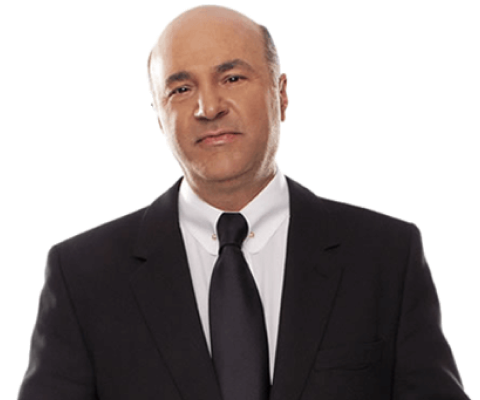What Is the Trademarking Process?
For many people, filing a trademark is an unfamiliar process, with a lot of different steps to take, so it can be hard to understand everything that goes into filing a trademark. Unless you’ve worked in a trademark company or paid trademark attorney costs, you might not know much beyond the basics like how much it costs to apply for a trademark in your area.
Let me start with the process BEFORE you file your trademark application. The first step is to do a proper trademark search to confirm that the brand that you came up with can be trademarked so that you're not wasting your time, not wasting your money trying to protect a brand that you can't own or maybe that you cannot even use. So start with a search.
This can save costly trademark attorney costs, so it’s good advice to save time, money, and effort for all involved.
How Filing Usually Goes (The Trademark Company Perspective)
Then, after performing that search, you (or your trademark company, depending,) draft and file the application. Ideally, you’re working with someone experienced with the ins and outs of the trademark system, so they can make sure every part of the application is as perfect as it can possibly be. They’ll minimize the risk of something being found with the trademark. This should make those trademark attorney costs more than worth it.
Then it's going to sit in the Trademarks Office for several months without anybody looking at it. So it's about 8 months in Canada, about 4 months in the U.S., and a little faster in Europe. So nobody is looking at it and then it gets assigned to a trademark examiner.
The trademark examiner is somebody at the Trademarks Office who is going to look at your trademark application and they're going to decide whether they will approve it right away, if everything is perfect, if they see nothing that they disagree with, nothing that they want to re-specify, they will just approve your trademark as it is.
In most cases, it's about 65% of the cases, they will go back to you with an objection, the list of objections, they call them an office action, where they're going to list everything that they don't like about your application.
And it will be up to you (or up to the trademark professionals that are helping you) to address each and every one of those objections. Some of them are easy to address, and some of them not so easy. We have several other videos in this series that you can watch to walk you through this.
Advice from a Trademark Company: What to do if faced with rejection
But let's say you've got an office action. From there, there are two possible scenarios. Either you can successfully modify your trademark application or convince the trademark examiner to accept it as it is, or sometimes it's the combination of the two, so eventually, the examiner says, "Okay, okay, I will approve your trademark application, you are good to go."
Or you are going to fail if you can't fix it, or you can't convince them to accept it, in which case they will issue a final rejection for your trademark application. And at that point, that's the end of the process, at least inside of the Trademarks Office system.
Can you appeal this in court? Yes, but this is done so rarely, that I am not even going to touch this. No matter how ironclad a case may seem, whatever the judge decides is not set until arguments are made in court. It’s better to seek other avenues, generally, and most other trademark companies would probably agree with me on this.
So let's say you were able to get your trademark approved. It will be published in a journal or gazette that publishes every single new trademark application that the Trademarks Office deemed worthy of being approved. The fact of that publication opens a short period of time when anybody can oppose your trademark application and ask the Trademark Office not to register your trademark that they thought should be approved.
So if there is somebody else out there who has a legal right, who has a legal interest to request that the trademark should not be registered, they can go to the Trademarks Office, and show their reasons why they think the trademark should not be registered, and the Trademarks Office will have to consider their argument.
Actually what happens is that if somebody opposes then the trademark applicant can (and should in most cases) respond to those arguments of the opponent and say, "No, no, no! I understand that you are willing to oppose it. I understand that you somehow think that my registration will damage your rights, but really it won't.
So my trademark is not confusingly similar to yours. It's not descriptive. It doesn't do any of those bad things that you say my trademark would do if it is registered. So please, Trademarks Office, don't listen to the opponent, listen to me. I need this trademark."
Where it Goes from There: Two Trademark Company Scenarios
From here, there are two scenarios: Your trademark will be allowed in the good-case scenario for you, or it won't. If it's not allowed, if it becomes successfully opposed by someone or you decide not to respond to the opposition, then your trademark application is going to die out there.
Good News from The Trademark Company: Most are Approved
But here is the good news. Of all the trademark applications that are published, less than 1% of those applications ever get opposed. It's what I call the catastrophe scenario. We have a separate video about opposition, and you may want to watch that. So 99% of trademark applications that the trademark examiner said, "We're good to go with that" they will be automatically allowed.
So, the trademark is approved, then it is published, and then, if nobody opposes it, it gets allowed. If it's opposed, then it goes to the opposition period and after you succeed at the opposition stage, then it gets allowed. This is when those trademark attorney costs really prove themselves valuable walking clients through this process.
After it gets allowed, if you filed your trademark application based on existing use or current use, if you're already using your trademark, then your trademark automatically will be registered. In Canada, you need to pay a post-allowance government fee for that.
In case you filed your trademark application based on proposed use or intent to use, you will also need to file a Declaration or a Statement of Use showing to the Trademarks Office or declaring to the Trademarks Office (again, watch the video about post-allowance Statement of Use) that you started using the trademark that originally was filed based on intent-to-use, and they will say, "Great, now we're going to register it."
How Much Does It Cost to Apply for a Trademark: Remembering to Renew Trademarks
How much does it cost to apply for a trademark? Beyond the initial fees for registering each class of good or service, there’s now the matter of additional renewals to consider when applying and reapplying for trademarks.
Now that your trademark is registered, you would think that's the end of the process, but really it isn't. What happens from there, you need to make sure that you don't miss deadlines to renew your trademark. The good news is that it won't be for 15 years in Canada (which term is going to go down to 10 years soon, but still 10 years to make sure that in 10 years you renew).
In the U.S., and actually, most countries in the world have just 10 years, Canada is an exception with its current 15 years, and the U.S. is an exception because while the renewal is due in 10 years like in any other country, you also need to file a post-registration statement of use, confirming to the Trademarks Office that you are still using your trademark between the 5th and 6th anniversary of the registration of your trademark.
From doing a proper search prefiling to the actual review process, getting it approved and keeping it renewed, there’s a lot to keep in mind maintaining a trademark. That hard work is more than worth it as those trademarks help your company create successful and recognizable brands.
You need to make sure that you monitor what's out there, that nobody is ripping you off, that you use your trademark, and that you renew it properly, but here is how it works. From search to drafting, to filing, to approval, to publication, to allowance, to registration.
It's a long process, takes a long time, and there are a lot of moving steps, but don't be discouraged: if you have a brand that needs to be protected, go through the process, or better yet, have somebody who knows what they're doing take you through the process, take your hand and walk you through the process every step of the way.
And make sure that you focus on what's important to you, building your business, and somebody who knows what they are doing is going to do what they are good at, which is responding to everything that comes from the Trademarks Office and dealing with every little issue that your trademark application may encounter.












